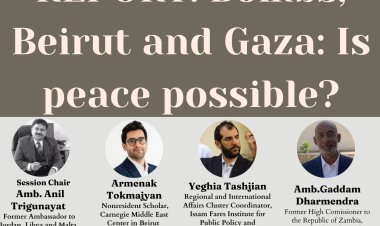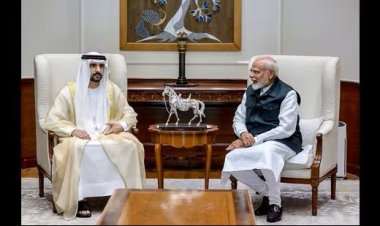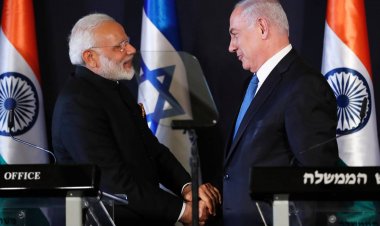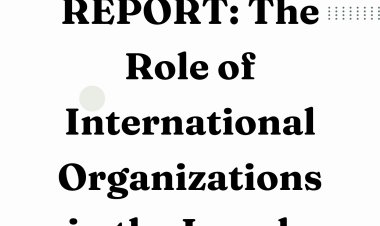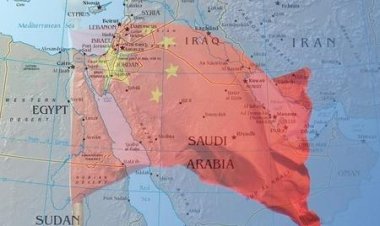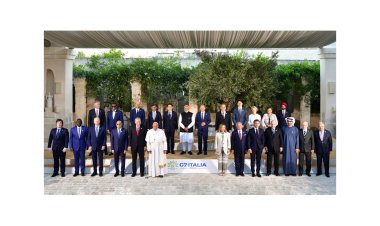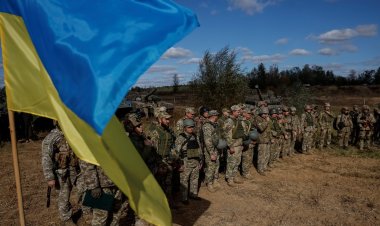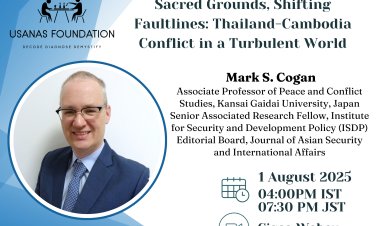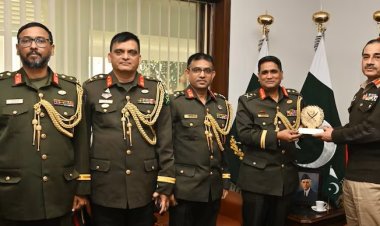Lure of Jihad: How role of women in Islamic State is changing and gaining significance
A thorough examination would reveal the factors and dynamics driving Indian women, particularly from Kerala, towards IS, which are multifaceted, including socio-economic challenges and online radicalisation, among others.
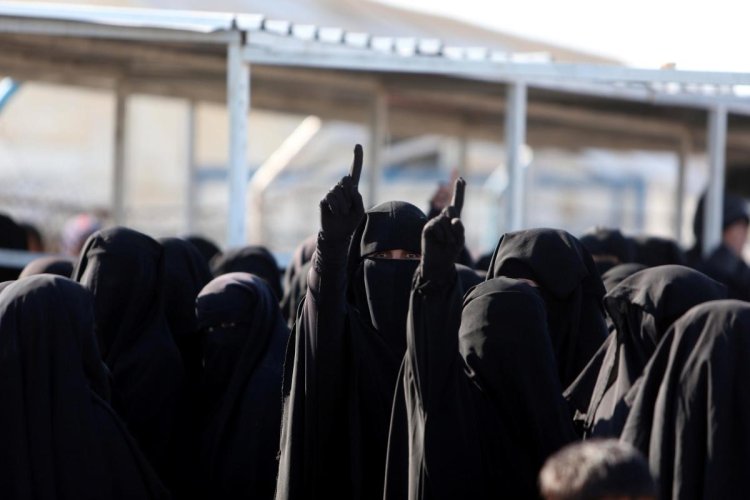
The downdrift in the activities of Islamic State, owing to targeted efforts to eliminate the group leadership, it would be interesting to take a peep into the recruitment of women by the Islamic State (IS) as an alternative option to sustain itself and understand the underlying motivation and effectiveness of such action by the group. It will also give an insight into the IS’ ideology, recruitment strategies, indoctrination processes, and the factors inducing them for their engagements in regions, including India’s Kerala. The understanding of these dynamics may facilitate policymakers/researchers to make pragmatic and effective contributions in countering group activities. This brief article explores the IS’ ideology, recruitment strategies, methods of indoctrination, women’s specific roles, and the factors driving Indian women, particularly in Kerala, to join the IS. By addressing these aspects, one can assess women’s involvement in IS and their potential implications for global security.
One cannot gainsay that female Jihadists have been in existence in the past too as testified by the fact that one-third of all violent terrorist attacks, documented globally, from 1985 to 2005, were attributed to women. During the very period, an investigation by Yoram Schweitzer exposed that nearly 15 per cent of the global suicide bombings owe their roots to approximately 220 documented instances of female suicide bombers. Despite male jihadists remaining key players in the majority of jihadist activities, it is an open secret that women are progressively occupying the key role in such activities.
Women in Jihadist organizations
There have been historical records to prove that women have remained active in war activities, though mainly in supporting roles of nursing/caregiving than direct combat, in various regions across the globe. This pattern persisted in contemporary Middle Eastern contexts, where women joined Jihadist organizations in the role of mothers. The 237 stories of Palestinians, linked to the initial Intifada between 1988-90, which were documented by Sharif Kanaana reveal key roles of women in 28 per cent of the narratives. Kanaana states that Palestinian mothers inadvertently facilitate the continuation of resistance by giving birth to male offspring, who eventually become fighters. Hence, women’s roles are deemed indispensable for the perseverance of resistance.
Jihadist organizations, however, do have instances of women engaged in violent activities. Even the Quran mentions female fighters, including the revered Nusayba bint Ka’ab, also known as Umm Umarah. She actively fought in six battles, including the Battle of Uhud, where she defended Prophet Muhammad alongside her husband and sons. These Islamic historical examples justify women’s involvement in contemporary Jihadist movements.
Women’s evolving roles in IS
In its initial days, IS was not focused on the recruitment of female followers. However, the women’s role gradually assumed significance with the evolution of the organisation’s objectives. Under the core IS ideology, propagating the establishment of an Islamic caliphate, governed by Sharia, women are supposed to don the traditional roles as wives, mothers, and homemakers to preserve moral purity. Apart from Jihadist duties women play a crucial role in nourishing and tending to the injured fighters, raising children and maintaining households. IS members use various social media platforms, such as Twitter and Telegram to engage online with foreign women. They allure women to travel to places like Syria, with the promises such as – a devout Jihadist husband, the experience of life in an authentic Islamic state, and an opportunity to dedicate themselves to their religion. The presence of a larger number of female members in IS in turn draws a greater influx of male recruits. The potential male recruits get allured by the prospect of Western blonde converts, who are regarded as more sexually desirable within the ideological framework of the organisation.
In July 2018, the estimated number of Western individuals who joined IS as foreign fighters and civilians reached 41,490, out of which 4,761 were women and 4,640 were minors. According to Mia Bloom, a professor at the Center for Terrorism and Security Studies at UMass Lowell, many girls are enticed to join IS due to a combination of fantasies and the belief that their involvement will empower them, offer an exciting life, and give their lives meaning.
One side of the spectrum considers that Jihadist women are the victims of brainwashing and its proponents advocate their potential repatriation, on the other hand, there are women and men, who adopted the IS ideology fueled by its narratives and propaganda. They diligently fulfil the roles assigned to them and women apart from marrying and giving birth to the offspring of Daesh militants, undergoing training, and assuming the mantle of terrorism.
Some women holding divergent views from Western-associated values, such as feminism, opt their innate inclination towards submission. They derive fulfilment from being dominated and directed. Aligned with the conviction that adherence to Sharia law signifies the most righteous path, these women perceive Western societies as incapable of fulfilling this ideological framework. The proponents of this position advocate for strict measures, opposing the repatriation of these individuals.
Significantly, IS considers women as a better option for carrying out suicide bombings, as women in society are largely perceived as associated with caregiving roles and draw lower security scrutiny in public arenas. Further, they possess the potential to exploit prevalent social norms and gender biases, prevalent in counterterrorism endeavours.
The IS subjects women to rigorous indoctrination procedures to brainwash their beliefs and behaviours by employing diverse methods, including isolation, psychological manipulation, exploitation of vulnerabilities, coercion, and the reinforcement of extremist ideology. By severing women from their previous social networks and sources of information, IS fosters a sense of dependence and loyalty. IS shapes their perception of the world and instills a profound sense of duty/devotion towards the group by utilising propaganda and fear-based tactics. Through coercion tactics involving pressure, deceit, or even physical force, IS exercises control over women’s actions and choices and through the relentless underpinning of their extremist ideology, indoctrinates women with a distorted interpretation of Islam that justifies their acts of violence and brutality. It transforms women into devoted adherents of IS’ cause.
Decoding IS recruitment of women in India
From an Indian perspective, Islamic State made inroads in Kerala from 2013 onwards. In early 2014, IS began establishing and deploying modules in Kerala that facilitated religious conversions and recruited professionals to join their forces in Afghanistan and Syria. Numerous individuals from Kerala, both men and women, have joined the ranks of the Islamic State of Khorasan Province (ISKP) in recent years. The United Nations, in its 2020 terrorism report, has cautioned about the significant presence of IS terrorists in Kerala.
The four girls trapped and lured to become Muslims, left India in 2016 to join the ISKP (Islamic State of Khorasan Province) – the Khorasan edition of IS – in Afghanistan along with a group of 21 men and women from Kerala. They were first taken to Iran and then they crossed over to Afghanistan on foot from Iran. One, Nimisha was the only Hindu girl among these four girls. The other three were Christian.
Women’s recruitment in India, specifically in Kerala, can be attributed to socio-economic hardships, radical ideologies circulated through social media platforms, a perceived sense of marginalisation/injustice, the allure of an idealised Islamic state, and the presence of networks to facilitate the recruitment/travel to conflict zones. The reasons behind Kerala’s women joining IS are multi-faceted. One significant factor is their conversion to Islam prior to their departure for Afghanistan. These conversions, motivated by either love or faith, make them more susceptible to radicalisation, especially if they face opposition or discrimination from their society or family. The online radicalisation exposure provides them with access to ideological narratives, peer groups, and emotional support that shaped their worldview and motivated their decision to join IS. Additionally, family ties played a crucial role in the recruitment process. The women were accompanied by their husbands and children when they migrated to Afghanistan, and family members often acted as recruiters or facilitators. The choice of Afghanistan over Syria or Iraq, as their destination by Kerala women may be attributed to factors such as geographical proximity, logistical convenience, ideological affinity, or personal preferences.
India as a whole has experienced fewer IS recruitments than West as India has a strong national identity that transcends religious or ethnic differences, fostering a sense of pride in democratic values and institutions. The country pursues moderate Islam and promotes pluralism, tolerance, inclusivity, and harmonious coexistence with other faiths/cultures. Additionally, effective counter-terrorism measures, including proactive security and intelligence agencies, international cooperation, and comprehensive legal frameworks, contribute to the prevention and detection of potential IS threats within the country. Furthermore, India’s vibrant civil society actively engages in countering radicalisation through initiatives such as interfaith dialogue, social harmony, education, etc.
Conclusion
A thorough examination of the role of women within IS sheds light on the organisation’s ideology, recruitment strategies, and indoctrination methods. It also reveals the factors and dynamics driving Indian women, particularly from Kerala, towards IS, which are multifaceted, including socio-economic challenges and online radicalisation among others. By understanding the ideology, recruitment strategies, indoctrination processes, and underlying motivations, comprehensive counterterrorism measures can be developed. Effective prevention efforts should involve countering online radicalisation, promoting alternative narratives, and strengthening community resilience. The strategies should prioritise empowerment and inclusion, by ensuring access to education, economic opportunities, and social support networks. The targeted strategies must aim to lessen the appeal of extremist ideologies, dismantle recruitment networks, and promote social resilience against radicalisation.
Disclaimer: This paper is the author's individual scholastic contribution and does not necessarily reflect the organization's viewpoint. The article was originally published by Firstpost.
Vaasu Sharma is a Foreign Policy Analyst based in India. He is pursuing his Ph.D. at the University of Haifa in the International Relations Department. He previously worked with WION Tv Channel as a Research Consultant in New Delhi. He has done his Master in International Relations with a specialization in Diplomacy Studies from the University of Haifa in Israel. He was also associated with BRICS International Youth Forum in India from 2016 to 2017.

